By James Rader
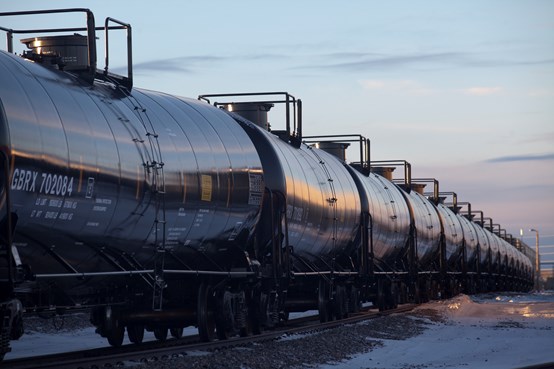
**UPDATE – Final PIH Action issued by AAR on 6/19/2019**
**See addendum below for more information**
Summary:
The Association of American Railroads (AAR) Circular CPC-1336 revised the implementation dates under CPC-1325, paragraph 2.8.1 Chapter 2 of the AAR Manual of Standards and Recommended Practices (MSRP), Section C, Part III, Specifications for Tank Cars (M-1002) from July 1, 2023, to December 31, 2027, with respect to tank cars constructed of normalized steel and transporting a material poisonous-by-inhalation. The AAR did not revise the implementation date with respect to tank cars constructed of non-normalized steel. That date remains July 1, 2019. Paragraph 2.8 now reads as follows:
2.8 Tank Cars Transporting TIH
2.8.1 After December 31, 2027, all tank cars used to transport products classified as TIH must comply with the requirements for tank cars built on or after March 16, 2009 (see 49 CFR 173.244 (a)(2), 173.314 (c) Note (12), 179.16 (c)(1), and 179.102-3 for cars marked DOT, or TP-14877 paragraph 10.5.1.2 for cars marked TC).
2.8.2 After July 1, 2019, all tank cars used to transport products classified as TIH, manufactured from carbon steel plate, must have tank heads and shells constructed of normalized material.

What does this mean for fleet owners and operators?
- For tank cars that are manufactured with non-normalized steel, the draft regulations propose a two-year phase-out schedule. Tank cars not meeting the standard after July 1, 2019, would be prohibited on the rail network in the U.S. and Canada.
- For tank cars manufactured with normalized steel, the draft regulations propose a six-year phase-out schedule. Tank cars not meeting the standard after July 1, 2023, would be prohibited on the rail network in the U.S. and Canada.
The draft rule would effectively require replacement of all tank cars transporting a TIH material by the above dates, unless such cars were built to the interim DOT standards enacted in 2009. While it is possible that some fleets may already fall within the new guidelines, the AAR estimates that only 10% of the existing North American TIH tank fleet is compliant with the standards adopted in 2009 (promulgated under Docket HM-256).
Which commodities are impacted?
The following list of materials are considered TIH (commercial STCC codes in parenthesis)*:
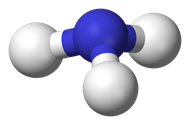
- Acetone cyanohydrin, stabilized (2818915)
- Acrolein (2818101)
- Allyl Alcohol (2818410)
- Anhydrous Ammonia (2819815)
- Bromine (2819919)
- Chlorine (2812815)
- Chloropicrin (2818830)
- Chlorosulfonic acid (2819422)
- Dimethyl sulfate (2818131)
- Ethyl chloroformate (2818037)
- Ethylene Oxide (2818239)
- Hexachlorocyclopentadiene (2818331)
- Hydrocyanic acid, aqueous solution or Hydrogen cyanide, aqueous solution with not more than 20% Hydrogen cyanide (2819434)
- Hydrogen cyanide, stabilized (2819434)
- Hydrogen fluoride, anhydrous (2819484)
- Poison inhalation hazard, Zone A materials Poison inhalation hazard, Zone B materials Phosphorus trichloride (2819415)
- Sulfur trioxide, stabilized (2819325)
- Sulfuric acid, fuming (2819340)
- Titanium tetrachloride (2819971)
*List is not exhaustive
Rule-making Background:
For hazardous materials transported by rail in the United States, the Department of Transportation (“DOT”) is the rule making body. Under the federal rules, the Department authorizes the Association of American Railroads (“AAR”) to, among other things, review tank car applications, set welding and repair requirements, and approve valves and fittings.
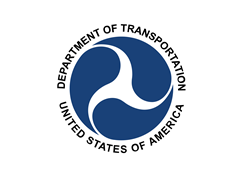
Beyond the minimum requirements of the DOT rules, the AAR may also set design standards on cars or operating restrictions on the line of road under its “Interchange Rules.” These rules govern the movement of freight cars on the general railroad system of transportation. All freight railroads, interchange freight car owners, and running repair agents must subscribe to these AAR rules.
Acting under its Interchange Rules, on March 31, 2008, the AAR approved Casualty Prevention Circular CPC-1187, which includes a new AAR interchange design standard for tank cars used for the transportation of TIH materials. The circular did not grandfather existing cars; meaning the circular prohibits the use of such cars under the Interchange Rules after December 31, 2018.
On January 13, 2009, the DOT issued new rules for the transportation of TIH materials in railroad tank cars. The DOT rule enacted an “interim design standard,” DOT 105J600I, to require the construction of tank cars built on or after March 16, 2009, to have improved safety features. These improvements included tougher and thicker tank shells and heads and improved top-fitting protection. The DOT adopted the interim design standard in anticipation that the AAR, FRA, and the industry would research and develop a new design standard having greater accident survivability. DOT grandfathered existing cars built prior to March 16, 2009, provided the AAR had already approved such cars for TIH service.
With the issuance of the DOT rule-making proceeding in 2009 and in support of continuation of AAR, FRA, and industry research, the AAR suspended CPC-1187 until January 1, 2013, with subsequent amendments suspending the effective date until January 1, 2015, and then again until January 1, 2017. As currently approved by the AAR, tank cars that do not comply with the CPC-1187 standard will no longer satisfy the interchange standards after December 31, 2018.
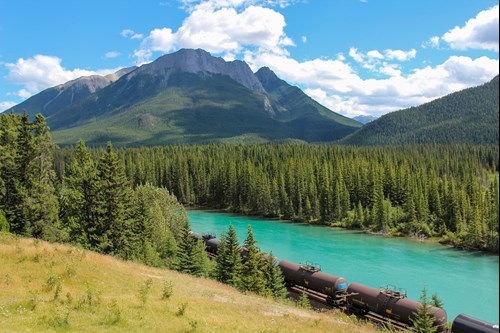
Currently under development, and as a result of a joint industry petition to DOT to recognize the interim design as the design standard, and to extend the AAR December 31, 2018 compliance date, the AAR issued CPC-1324 requesting comments to amend CPC-1187. The circular proposes to accelerate the phase out of tank cars that do not meet the new TIH construction standards by removing DOT’s “grandfathering” of cars built prior to March 16, 2009.
In addition to these actions, based on a petition by the Chlorine Institute (P-1636), the DOT published a notice of proposed rule-making on June 30, 2016, seeking to remove the life-limit of 20 years for cars built to the DOT design standard. It is believed that an extended life-limit could offset some of the regulatory costs of CPC-1324 compliance. PHMSA anticipates a May 2017 publication date for P-1636.
What to expect for 2017:
Greenbrier follows rail industry rule-making proceedings very closely. With a certain degree of uncertainty surrounding the regulatory environment of the new Administration, many outcomes are possible. Our regulatory compliance and asset management team has decades of experience helping fleet owners navigate compliance issues, and our engineering team continues to work with shippers to develop unique tank car designs that aim for improved safety and efficiency.
As the impact of the new tank car TIH rule-making proceeding becomes clearer, we will continue to update this article. In the meantime, please do not hesitate to contact us with any questions regarding these proposed changes.
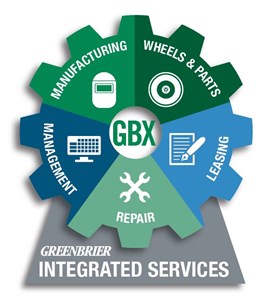
——————————————————
AAR Final PIH Action – 6/19/2019:
Final Action – AAR Requires the Phase Out of Legacy Tank Cars Transporting TIH Materials
In June 2018, the Chlorine Institute, the American Chemistry Council, The Fertilizer Institute, and the Association of American Railroads jointly agreed to extend the deadline for phasing out normalized, legacy TIH tank cars to December 31, 2027. See 74 FR 1769, dated January 13, 2009. The DOT regulation requires tank cars transporting TIH materials built on or after March 16, 2009, to comply with enhanced safety measures for rail transportation, which included an interim design standard. The enhanced design standard generally requires the use of a tank car with an increased shell or tank jacket thickness, full-height head protection, and improved top fitting protection, which taken together, greatly improves the ability of the tank structure to withstand impacts and to retain its contents.
The AAR interchange standard requires the following actions:
- On or before July 1, 2019, the removal from service of any tank car in TIH service manufactured from non-normalized carbon steel plate; and
- On or before December 31, 2027, the removal from service of any tank car in TIH service that does not comply with the DOT regulations for cars built on or after March 16, 2009.
The standards and procedures followed by the Association of American Railroads in the development of its Interchange Rules have been in place for decades, and are part of what car owners and other interchange rule signatories agree to abide by when operating their equipment on the general railroad system of transportation (a network of privately owned track). The Interchange Rules consist of private safety standards, outside of the federal safety standards, that govern both the design and operation of rail cars on the Nation’s network of standard gauge track. Often, these standards are more stringent than the federal safety standards to ensure that car owners or railroad employees find defects before such defects reach a federal condemning limit. The Interchange Rules also impose additional design or operating requirements on rail cars that may not exist in the federal regulations.
The AAR Interchange Rule effects approximately 14,000 tank cars. A majority of the tank cars currently transport chlorine and anhydrous ammonia. Other products include, for example, acetone cyanohydrin, stabilized; acrolein; ally alcohol; bromine, chloropicrin; chlorosulfonic acid; dimethyl sulfate; ethylene oxide; hydrocyanic acid; hydrogen fluoride, anhydrous; sulfuric acid, fuming; and titanium tetrachloride.
| Materials Poisonous-by-Inhalation Proper shipping name | Authorized Tank Car Specification |
|---|---|
| Acetone cyanohydrin, stabilized | 105J500I, 112J500I |
| Acrolein | 105J600I |
| Allyl Alcohol | 105J500I, 112J500I |
| Anhydrous ammonia, or ammonia solutions > 50 percent ammonia | 105J500I, 112J500I |
| Bromine | 105J500I |
| Chlorine | 105J600I |
| Chloropicrin | 105J500I, 112J500I |
| Chlorosulfonic acid | 105J500I, 112J500I |
| Dimethyl sulfate | 105J500I, 112J500I |
| Dinitrogen tetroxide, inhibited | 105J500I |
| Division 2.3 Zone A materials not specifically identified in this table | 105J600I |
| Division 2.3 Zone B materials not specifically identified in this table | 105J600I |
| Division 2.3 Zone C materials not specifically identified in this table | 105J500I |
| Division 2.3 Zone D materials not specifically identified in this table | 105J500I, 112J500I |
| Ethyl chloroformate | 105J500I, 112J500I |
| Ethylene oxide | 105J500I, 112J500I |
| Hexachlorocyclopentadiene | 105J500I, 112J500I |
| Hydrocyanic acid, aqueous solution or Hydrogen cyanide, aqueous solution with not more than 20% hydrogen cyanide | 105J500I, 112J500I |
| Hydrogen chloride, refrigerated liquid | 105J600I, 112S600I |
| Hydrogen cyanide, stabilized | 105J600I |
| Hydrogen fluoride, anhydrous | 105J500I, 112J500I |
| Hydrogen sulfide | 105J600I |
| Methyl bromide | 105J500I |
| Methyl mercaptan | 105J500I |
| Nitrosyl chloride | 105J500I |
| Phosphorus trichloride | 105J500I, 112J500I |
| Poison inhalation hazard, Zone A materials not specifically identified in this table | 105J600I |
| Poison inhalation hazard, Zone B materials not specifically identified in this table | 105J500I, 112J500I |
| Sulfur dioxide, liquefied | 105J500I |
| Sulfur trioxide, stabilized | 105J500I, 112J500I |
| Sulfuric acid, fuming | 105J500I, 112J500I |
| Titanium tetrachloride | 105J500I, 112J500I |
For further information concerning the AAR circular letter, please contact Greenbrier.
——————————————————
James H. Rader (“Jim”) provides leadership and regulatory services to Greenbrier Companies, its subsidiaries, and to Greenbrier’s customers. Currently, Jim is the Vice President of Regulatory Services, Greenbrier Management Services. Jim has four decades of railroad industry experience that includes service at two Class I railroads, the Federal Railroad Administration and the Association of American Railroads. Jim worked most recently for Watco Companies, a leading shortline and terminal operator, and 50/50 partner with Greenbrier in the GBW Railcar Services railcar repair joint venture. Currently, Jim serves on the board of the Mechanical Association Railcar Technical Services (MARTS) and recently represented shortline railroads on the AAR Tank Car Committee, where he chaired major subcommittees. He is also a regular contributor at the FRA Railroad Safety Advisory Committee (RSAC).
In his current role, Jim provides his clients services in transportation regulatory compliance, rail car fleet management, quality-management systems, rail car maintenance specifications and standards, railroad accident and incident investigations, hazardous material and rail car training, federal claims mitigation, and support for rail-related litigation.
Jim holds a Bachelor of Science Degree from Strayer University in Business Administration. Jim was a former Staff Director, Federal Railroad Administration, Hazardous Materials Division, located in Washington, D.C., a Senior Inspector / Training Officer (Hazardous Materials) for the Association of American Railroads, and he worked for two Class I railroads.

